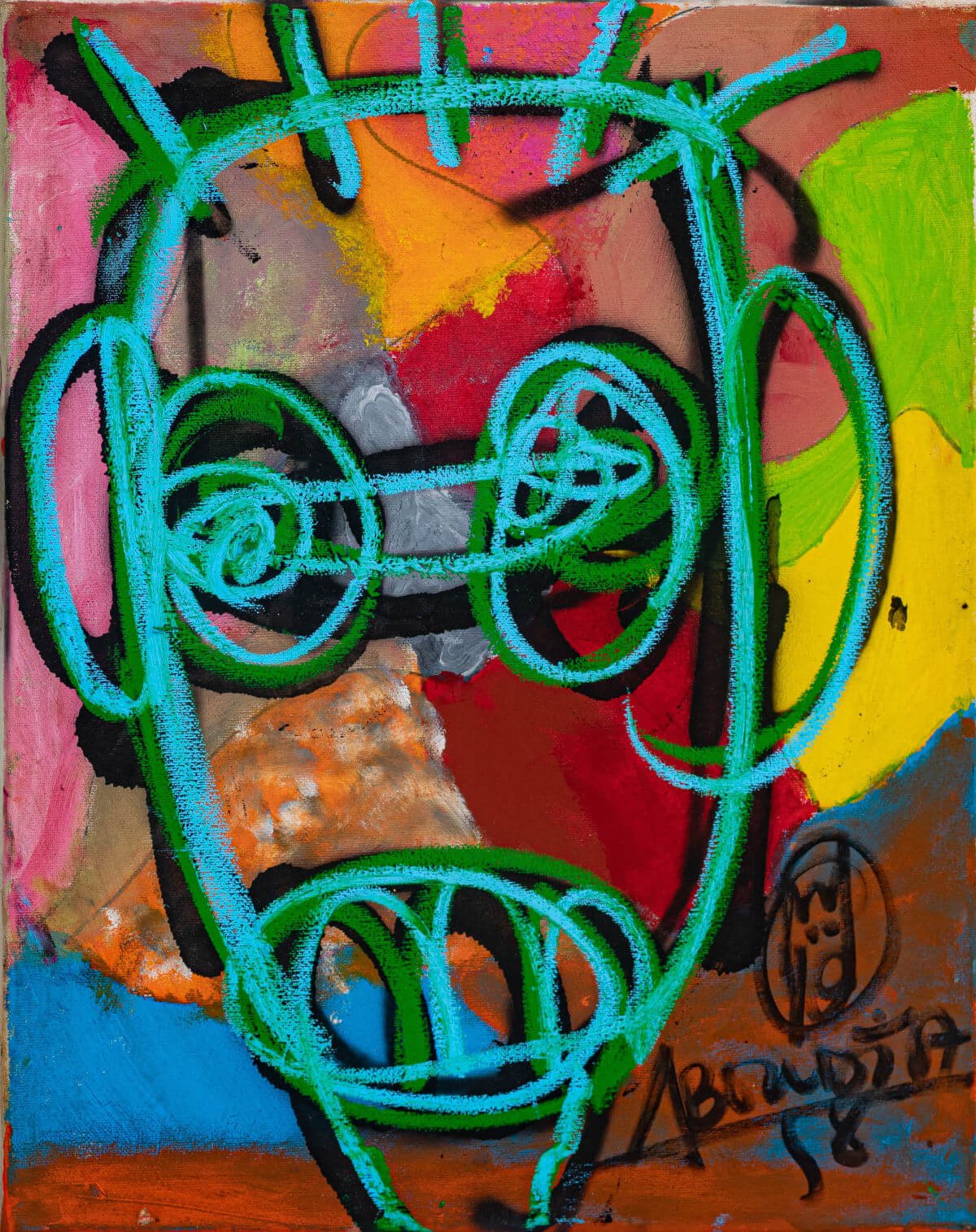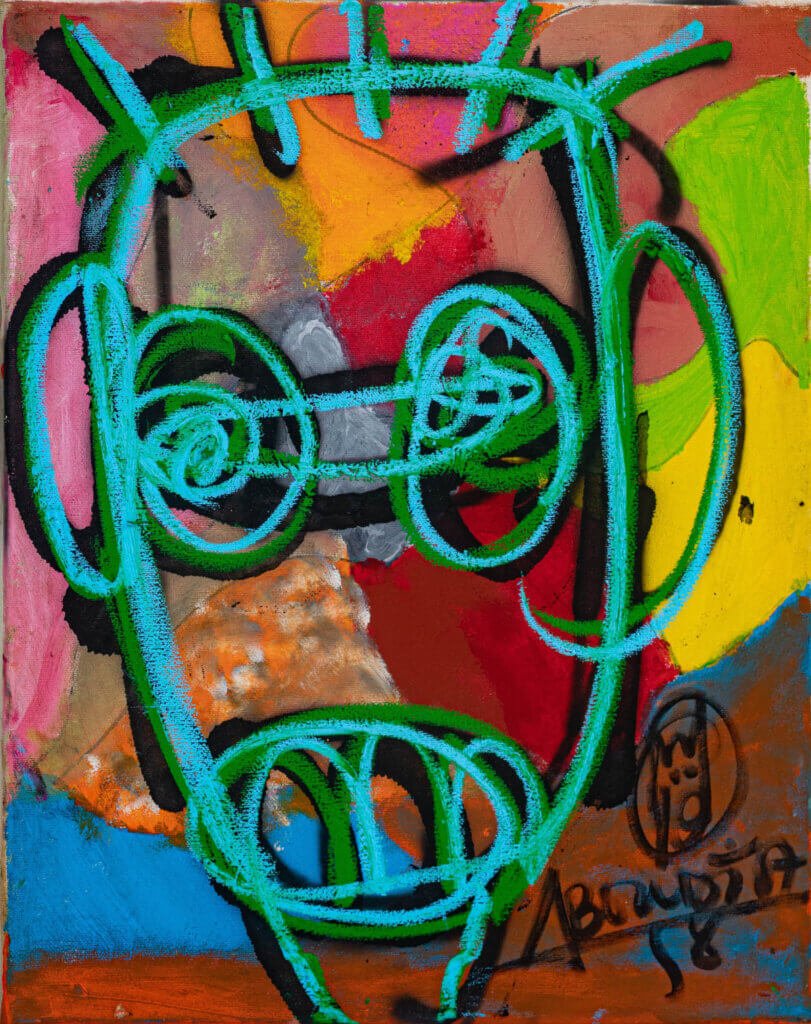Galerie Cécile Fakhoury is pleased to present Aboudia’s new solo exhibition, Tokyo, from 19 June to 28 August 2021. The exhibition will feature new works on canvas and paper, a monumental fresco and a selection of drawings from the artist’s archives.
Some may recognise in Tokyo, the title of the exhibition, a reference to Yopougon, Aboudia’s home district. Unless this Nouchi translation is no longer (or not yet?) relevant, carried away by the ceaseless flow of life that characterises this language and those who speak and invent it every day. That does not matter. The title alone evokes the freedom of Aboudia’s plastic gesture, which draws a world of fluid geography, unreservedly inspired by a constellation of references, where the present is king.
Covering the entire back wall of the gallery, a huge fresco thirteen metres long welcomes the visitor and transports him into another world, that of the district, of the gbaki. In Abidjan, many people speak Nouchi, an Ivorian slang, and almost everyone understands it. However, the language is constantly evolving, new words are created every day. There is no dictionary, no “academy” responsible for validating neologisms, no official network for disseminating new vocabulary. Nouchi never stands still. It never stops being updated. It is within the informality of its existence that this language finds its freedom and manages to remain deeply alive.
Just like Nouchi, Aboudia’s plastic universe is made of perpetual movement, creativity and energy. Aboudia thus invents an aesthetic vocabulary of his own, the strength of which resonates with the varied experiences of different viewers. By not conforming to any code, Aboudia’s work rises above borders to reach a universal form.
His paintings take us on a journey into his world, which is strangely familiar to us. In this world, fantasized otherworlds are inscribed in the reality of the present, and the fourth wall of reality is constantly being destroyed to let in parallel dreams. The impossible has no place here. As the background of the fresco testifies, made up of an assembly of images, articles, photographs or book pages, the artist appropriates what he does not know, makes what is other his own, without waiting for anyone’s permission. His works contain in themselves the extent of his world, its infinity, beyond all limits.
As soon as one enters the exhibition, the spectator is caught up in a frantic and almost hypnotic rhythm, each colour bringing a new pulse, each material a new note to the general tohu bohu. Here cardboard, there children’s clothes. On one side fluorescent and electric colours, on the other dark shades with gloomy accents.
One of the paintings in the exhibition, Au gbaki, stands out for the presence of coloured children’s clothes attached to the canvas, as if echoing the large installation made of kids’ clothes and stuffed animals presented by Aboudia in 2016 in his solo exhibition Môgô Dynasty. The paint drips are reminiscent of the long threads of fabric from that time, and thus testify to the aesthetic and temporal coherence of the artist’s universe.
In Au gbaki the clothes come to life. Immersed in a busy and sonorous atmosphere, young children in colourful clothes play in the streets, the horns of cars sometimes covering their laughter. They wander around in groups, making their first mistakes, forming friendships. Is their story happy or sad? Are we witnessing the first moments of freedom of young people away from the parental gaze or children left to their own devices? The work does not tell us. But it does tell us about the noise, the heat, the energy and the games. It tells of a chaotic euphoria, a life that overflows the very space of the canvas.
“We’ll sleep when we’re dead,” the wide-eyed, disjointedly smiling figures seem to whisper to us as they welcome us. For a moment, we can almost see them emerging from their canvas, walking towards us and inviting us to join their dance, this celebration of life, both frightening and powerful. Although they are not flesh and blood, the characters in Aboudia’s works are undeniably looking at us. Dozens of pairs of eyes observe us, their smile ironic, perhaps mocking. What are we doing standing here?
In the image of Aboudia, his works are indecisive, rebellious. The characters in his paintings do not allow themselves to be fixed or seized. Rather, they amuse themselves by dizzying us with their double outline, by always evading our expectations, our very gaze. Aboudia thus plays with the rules of figuration and abstraction, and those of contemporary art in general. He deconstructs the exhibition space of the white cube, and asserts himself noisily, with all his gang, his gbonhi, in a world that seeks to temper them. Let’s listen to them, they are the dangôrôs* of the upcoming world.
*the kings, the strongest
©2021 Galerie Cécile Fakhoury, ABOUDIA





